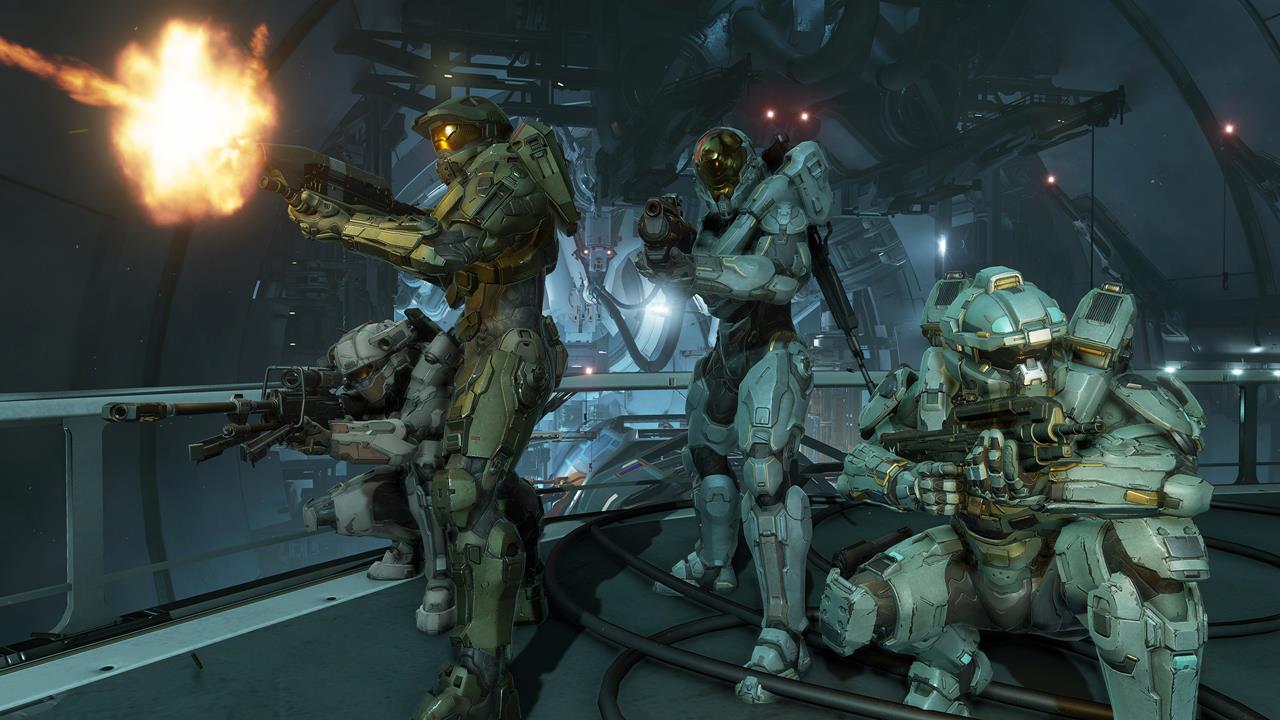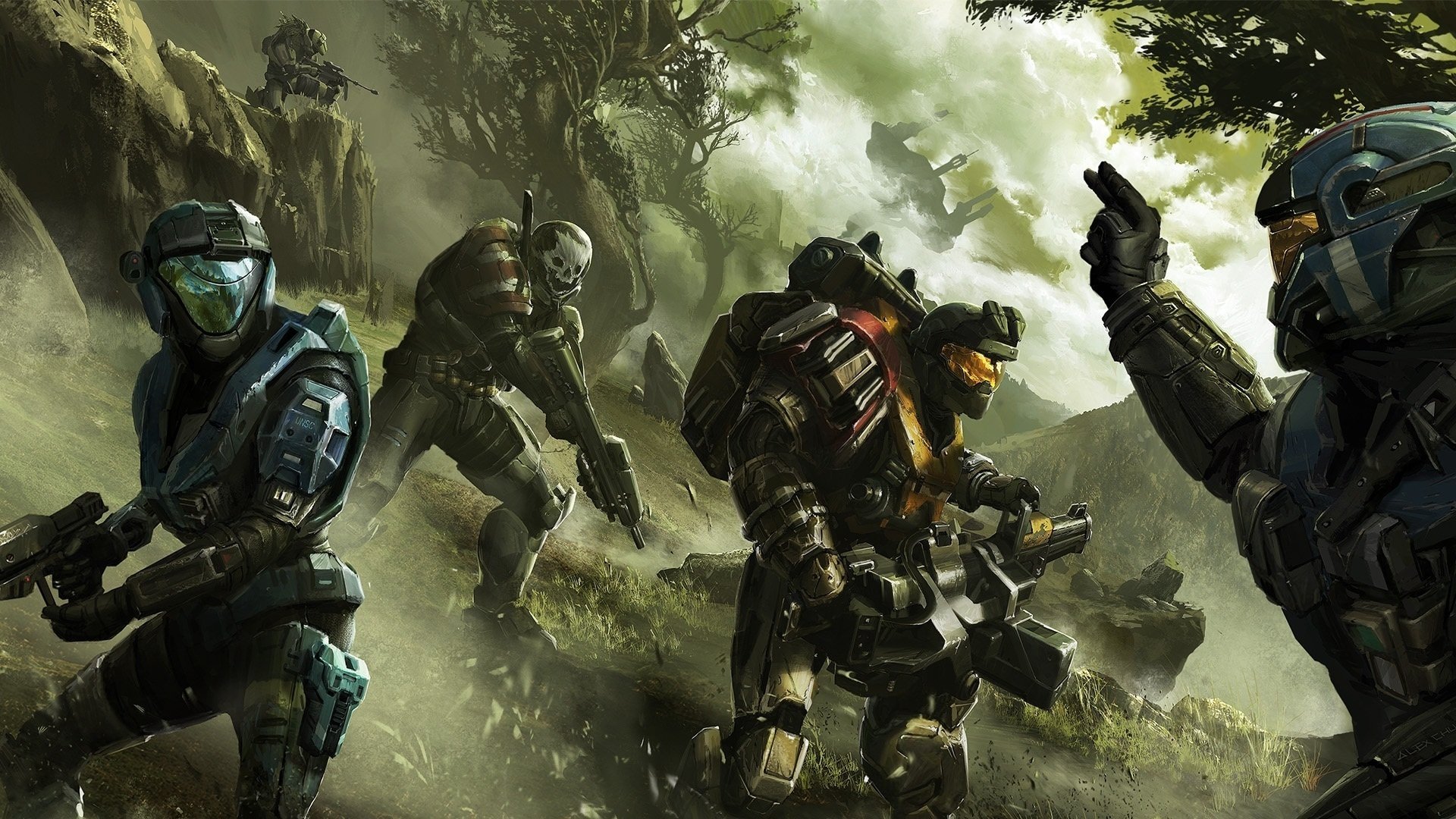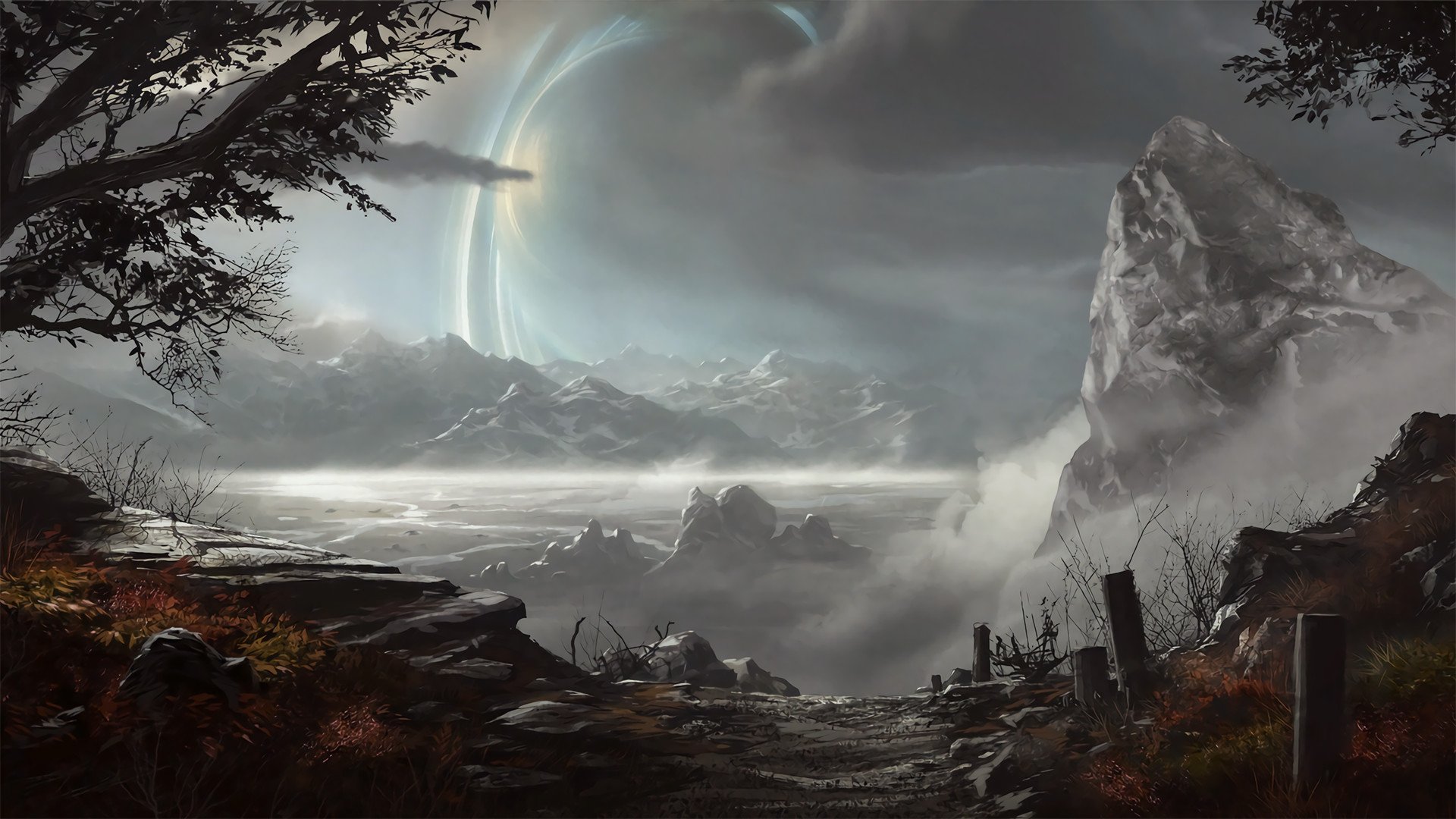Every Halo game ranked from best to worst
Since Halo's debut in 2001, it has grown to be one of gaming's biggest juggernauts. But which of the legendary Halo titles rank above the others?

With nine major releases over the last 16 years, the franchise has enjoyed success after success, but it hasn't all been plain-sailing.
Since Halo: Combat Evolved, the gaming industry has been blinded by the Halo franchise's majesty. Paralyzed by its revolutionary storytelling and dumbstruck by gameplay design that was years ahead of its time, Xbox owners have been blessed with the Halo IP for the better part of twenty years. For a time, the series was so unrivaled in quality that titles that managed to compete against it successfully were dubbed "Halo killers."
In this article, though, we're going to take a look at how each Halo FPS title competes with each other. Even though each and every one of the games has contributed to the franchise's Great Journey through the years, some of them rise above the others in quality. Here's my personal list of every major Halo game, ranked in order from best to worst.
1. Halo 2

Halo 2's stellar writing, music, and gameplay make it stand out among the rest.
Where Halo: Combat Evolved served as a broad introductory chapter into the vast universe of Halo, Halo 2 manages to construct a story that narrows down the perspective and tells us a much more personal story with the Arbiter. While Chief is prominent in this game, he takes a backseat role as a character and serves as a deuteragonist.
While some dislike this, I personally love it, as moving the focus onto Arbiter and the Covenant allows for characterization and exploration of new characters, and Halo's main antagonistic force overall. The character arc of the Arbiter, for me, remains the best story told in Halo, and the way that Halo 2 manages to weave his narrative into the grandiose, galaxy-wide plot is the best writing the series has to offer. Paired with Marty O'Donnel's top-notch musical score, nothing can beat it.

When it comes to gameplay, both the singleplayer and multiplayer are satisfying experiences. While it is linear, Halo 2 is an example of how linear game design can work well. Each area in the game felt different and dynamic, essentially providing a new "stage" in each engagement for the famed "Halo dance" with enemy AI the series is known for. Multiplayer wise, the game put Xbox Live on the map with its revolutionary party system, while also improving upon the groundwork of a multiplayer shooter that Halo: Combat Evolved left behind.
Halo 2 is unavailable on the Xbox Store, but you can play it in the Master Chief Collection. The Anniversary edition is a sight to behold.
Get the Windows Central Newsletter
All the latest news, reviews, and guides for Windows and Xbox diehards.
2. Halo 3: ODST

Halo 3: ODST shows us what it's like to be a normal soldier in the Human-Covenant War.
Most of the Halo games have us take control of a badass Spartan super soldier. As we kick alien ass and take alien names, we begin to feel like we're unstoppable warriors. In essence, they're a power fantasy. Halo 3: ODST spins that formula on its head.
Instead of playing as the Master Chief, ODST puts us in the boots of Orbital Drop Shock Troopers — special forces troops in the UNSC's military. Stranded in a Covenant-occupied city on Earth, the only chance for survival is to regroup with your squad and escape.
What really makes me love ODST so much is the grit of it. It's a very dark portrayal of the Halo universe. You don't have shields, you don't have special armor, and the only thing you do have is your squad and your wits. Due to this increased danger, the gameplay becomes much more tactical as a result.
Together with a camaraderie-centered narrative, challenging gameplay, the introduction of Halo's Firefight mode, and a beautiful, somber soundtrack, Halo 3: ODST is an incredibly satisfying and unique Halo experience.
3. Halo: Combat Evolved

Halo: Combat Evolved is often regarded as the most influential shooter in history, and with good reason.
The game that started it all. Halo: Combat Evolved was Halo's debut into the worlds of video games and science fiction, and it managed to take both by storm. The non-linear design of its levels and the complexity of its AI were an unprecedented breath of fresh air after years of fighting mindless enemies in tight hallways, though the latter half of the game did become repetitive. The story, while simple, was an action-packed adventure that explosively introduced Halo to the world. On top of it all, it featured a thrilling score that no other game at the time could compete with. Combat Evolved was truly a masterpiece by 2001's standards.
As if this wasn't already enough to make it worthy of its spot in the Video Game Hall of Fame, Combat Evolved also laid the foundation down for Halo's future as both a casual and a competitive shooter. The game's multiplayer could be played on LAN connection, meaning that you and up to 15 other friends could all play together (provided you had four Xbox consoles and televisions!)
4. Halo Wars 2

Halo Wars 2 built upon and improved the already solid real-time strategy mechanics of the original.
Halo Wars 2 was the title that Halo Wars's dedicated following had been waiting for for over seven years. Introducing a new, interesting faction in Atriox and the Banished, as well as containing many things that will potentially tie in to the mainline Halo series, the sequel to the original Halo RTS brings a fun and fresh, albeit simple and predictable, side-story to fans. Indeed, the campaign is mostly about the gameplay; the story isn't anything that will blow any minds. Nevertheless, it's serviceable.
In truth, the real value of Halo Wars 2 lies within its multiplayer. By taking Ensemble Studios's original Halo Wars formula and improving it by adding depth to already existing mechanics and even implementing some new ones, Creative Assembly managed to craft a simple, easy to pick up RTS game that has a surprising amount of depth for those who are able to play it at higher levels. It's an addicting experience if you put the time and effort in so that you can become a better player.
5. Halo Wars

Halo Wars was a valiant, yet flawed attempt at real-time strategy Halo that proved potential in the genre was there for the sci-fi franchise.
Ah, Halo Wars. One of my most played games of my young adolescent years.
Halo Wars was Ensemble Studios's version of what Halo would look like if it was a simplified real-time strategy game. For story fans, it brought a narrative about the early days of the Human-Covenant War to the table, and while it checked all the boxes of requirements for being a decent story, Halo Wars, like the future Halo Wars 2, never really rose higher than this. In some ways, it was even more predictable than its sequel, due to the fact that instead of the new and unheard of Banished, we fight the Covenant we've seen time and time again.
Thankfully, the multiplayer of Halo Wars was a blast of an experience. Seeing a Halo RTS actually work well was a treat, and while the game had its long list of bugs and balancing issues, it was still nonetheless a testament to the potential of Halo in this genre. The foundation created by Ensemble Studios would serve as the template for Creative Assembly's attempt almost a decade later with Halo Wars 2, and the success of that game has this one to thank for being a stepping stone.
Oh, and Stephen Rippy's score in Halo Wars rivals that of O'Donnell himself. Fight me.
6. Halo 4

Halo 4, despite its glaring gameplay flaws, managed to deliver one of Halo's best stories.
The long-awaited return of the Master Chief arrived in 2012 with 343 Industries's first game, Halo 4. Graphically, the game was stunning, and it served as an example of the best the Xbox 360 hardware had to offer. While very different from previous music, the score of Halo 4 was quite good as well.
However, the best aspect of Halo 4 was its narrative. For the first time, the character of the Master Chief was fully fleshed out to the player. Couple this with Cortana as she spirals towards her A.I. rampancy, and the various moments and dialogues between the two iconic Halo figures creates a deep, emotional story that tugs quite heavily on the heartstrings.
Where Halo 4 fails quite heavily, though, is in the gameplay. Between poor AI enemies and badly designed levels, the gameplay side of Halo 4's campaign was mostly a chore. Multiplayer wise, the game chose to double down on many of Halo: Reach's poor design decisions, creating a multiplayer that, simply put, didn't feel like Halo.
7. Halo 3

Halo 3's disappointing campaign holds it back from reaching its max potential.
Halo 3 was one of entertainment's biggest ever releases, even being blamed by some analysts for a reduction in box office sales that occurred shortly after its release. Unfortunately, I don't think that Halo 3 deserves all of its fame.
Halo 3 stands as Halo's best multiplayer, even to this day. Armed with feedback from Halo 2, Bungie was able to craft one of gaming's most satisfying multiplayer experiences ever — along with introducing Forge mode. Despite some wonky netcode, Halo 3 was rightfully heralded as the perfection of the Halo formula.
The problem with Halo 3 is that this doesn't transfer over into the campaign, in either the story or gameplay respect. The narrative, while coherent, felt very awkwardly paced and haphazardly written. The entire first half of the game didn't even contain any character development at all, leaving it all to be crammed in later on. Overall, it wasn't able to satisfyingly conclude the trilogy's storyline. As for the gameplay, Halo 3 had the worst AI in the series, even managing to be less intelligent in battle than the enemies in Halo 4. While it's true that Halo 3's level design was solid, it doesn't really matter if the enemies that fill those levels are lackluster.
8. Halo 5: Guardians

Halo 5 felt confused in its direction across the board.
Similar to Halo 3, Halo 5's writing and campaign gameplay were overall incredibly lackluster. Aside from the Hunters, the AI and most of the levels (Sanghelios being the exception) in Halo 5 are incredibly disappointing, and unlike 343's first game, Halo 4, there isn't a compelling narrative there to bail the singleplayer out. Jameson Locke and Fireteam Osiris seem like they could be interesting characters, but never truly get the development they need.
Multiplayer wise, the game tries to bring back some elements from classic Halo but continues to move away from it in other areas. This creates a strange mix in which Halo 5 truly feels confused about what it wants to be, and it ends up being average in quality. Thankfully, the Forge mode is absolutely incredible and has led to some of the most amazing Halo maps ever made by its community.
9. Halo: Reach

Bungie's final addition to the Halo series was ultimately a disappointment.
Bungie decided to conclude their time with Halo with an experiment. Sadly, though, it was an experiment that left me disappointed on all fronts.
The campaign's narrative was paced and structured awfully. Reach clearly wanted you to like and care about the members of Noble Team, yet they begin to get killed off before you get the chance. With the exception of Jorge, every single character death in the game felt so... bland. It doesn't help that the story directly contradicts Eric Nylund's "The Fall of Reach," either.
Thankfully, the AI enemies are good this time around, but the gameplay still isn't that fun thanks to a terrible weapon sandbox. Only a handful of the game's weapons are useful in combat, leaving the rest to fill an incredibly niche and situational role. This ultimately creates a feeling of repetitiveness. Put all this together with what I think is the only poor Halo score in existence, and you have a Halo campaign that fails to impress on any front.

For the multiplayer, Halo: Reach split off from the Halo formula and tried adding new mechanics, like armor abilities and blooming on firearms. Unfortunately, as with Halo 5, these new changes did not really fit Halo that well and ended up creating a game that contained several inconsistencies and thus was difficult to play competitively.
Reach's Firefight mode was fun and customizable, but it didn't quite make up for the hole left by the lackluster arena gameplay. The Forge, dubbed "Forge 2.0" was an improvement on Halo 3's, but, like Firefight, it just wasn't enough.
Your thoughts
What do you think of my list? Make sure to let me know how much you hate me for my opinions down in the comments. Don't worry, I can take it!
Brendan Lowry is a Windows Central writer and Oakland University graduate with a burning passion for video games, of which he's been an avid fan since childhood. He's been writing for Team WC since the summer of 2017, and you'll find him doing news, editorials, reviews, and general coverage on everything gaming, Xbox, and Windows PC. His favorite game of all time is probably NieR: Automata, though Elden Ring, Fallout: New Vegas, and Team Fortress 2 are in the running, too. When he's not writing or gaming, there's a good chance he's either watching an interesting new movie or TV show or actually going outside for once. Follow him on X (Twitter).

